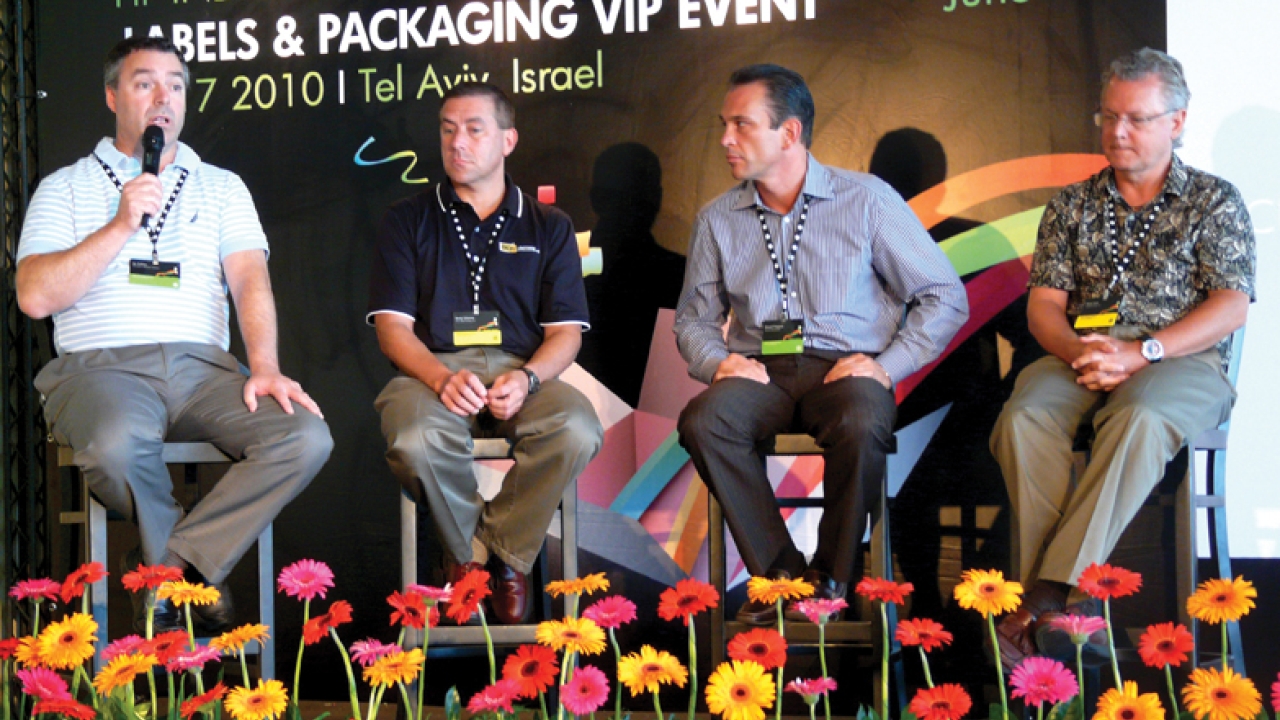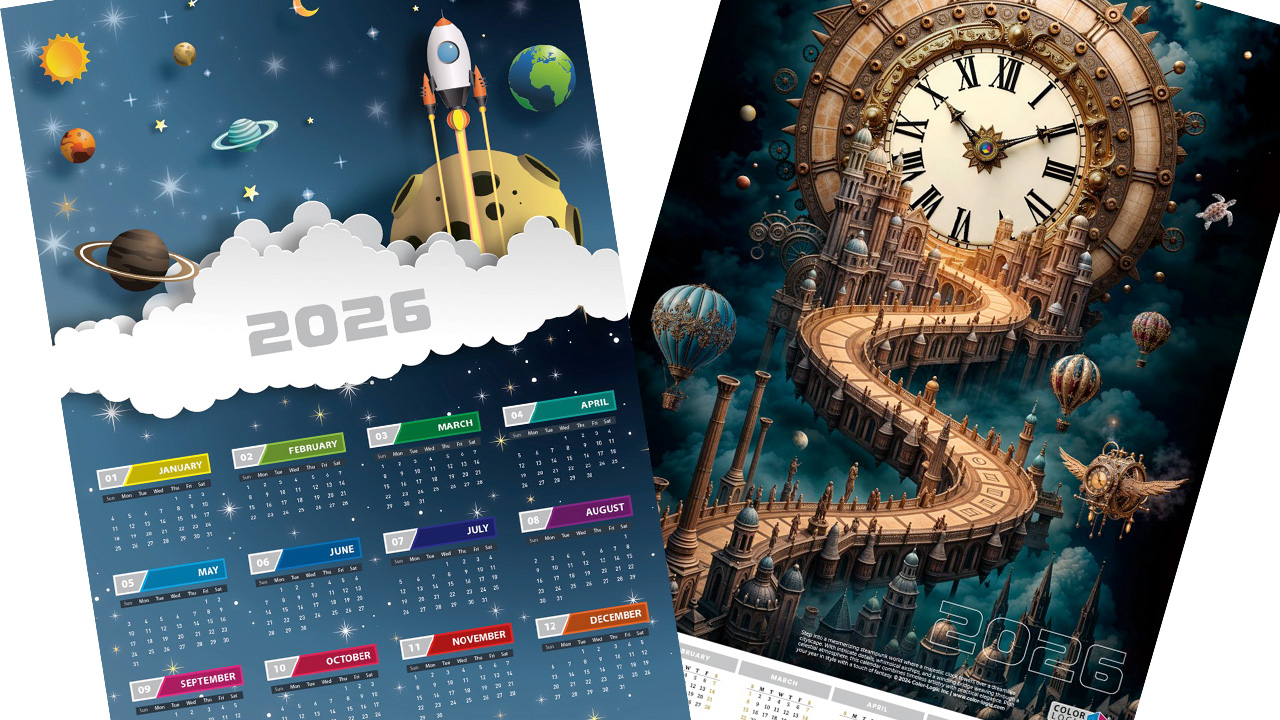Where now for digital?

In a preview of HP Indigo’s Dscoop6 2011 user group, Danielle Jerschefske reports on a seminar of leading US digital converters and brand owners discussing the future direction of digital printing
Up to now digital has mainly been seen as an opportunity to print variable data, include security elements and run cost effective short-run orders of quality labels. Now leading digital converters have moved on to managing brands’ color requirements and generating cost savings and supply chain efficiencies.
These issues were discussed at a VIP event HP hosted in Israel for a number of its North America-based label and packaging converter clients and supplier partners. Guests visited the manufacturing plants for HP Indigo presses and its proprietary ElectroInk, networked with company executives and R&D engineers and learned about related technology advances made by Indigo partners EskoArtwork, LabelTraxx and Avery Dennison. There was a strong focus on the more diverse label and packaging applications that the latest presses can produce, such as shrink sleeves, folding cartons and in-mold labels.
A panel of leading digital converters talked about their experiences with the HP Indigo WS6000, introduced in 2009 as the global recession revealed new opportunities for
digital printing.
Jay Dollries, president of Innovative Labeling Solutions (ILS), said 2009 saw a trend toward lowering inventory: ‘Before the economic crisis digital was generally ignored by brands since they buy labels on price and don’t consider the total cost reduction and overall value that can be found with the technology. But the recession brought total cost evaluation to the forefront of their decision making process.’
Randy Duhaime, general manager at Dion Label, had a similar experience to Dollries. ‘Customers want to hold as little inventory as possible. They are incentivized by the fact that, with digital, they don’t need to put inventory on the shelf like with conventional, increasing their bottom line.’
Sancoa, a label and packaging converter that caters to many international brands, has increased acceptance of the technology in the same way. Ed Wiegand, VP sales, explained, ‘We’re selling based on the advantages of digital and total delivered cost, reduced inventories and increased response time.’
7-color process
Global brand owners typically have a couple of thousand brand colors in their books. Expanded gamut printing systems can often hit many of these colors with minimal delta change. If end users can be persuaded to accept process color in place of spot colors, there are big potential advantages in terms of color harmonization, cost savings and speed to market.
Wiegand explained, ‘We were able to compel a switch by tweaking color early in the design stage. We proofed the customer’s entire line on press and worked with them through the process.’
‘There is a lot of skepticism with matching brand colors to ECG,’ Dollries added. ‘It’s all about going through the process with them. Brands are sensitive – we’re selling a service versus simply selling labels.’
Dollries and his team at ILS strive to speak to the people at the brand who will understand the benefits of digital technology. ‘We create partnerships with brands and the whole supply chain including contract packers.’ Some brands leave purchasing decisions up to them. ‘This adds value to our service and helps us better understand their process and their thinking.’
All of the panelists that participated in Israel have at least two WS6000 machines, part of a growing trend to acquire a second press shortly after the initial installation. HP’s Roy Oomen, a strategic account manager in Indigo’s label and packaging division says, ‘Across the board, we’ve seen that once the first unit goes in interest in a second unit comes quickly, and is often ordered and installed within the next, say, nine to 12 months.’
Throughput & efficiency
Dollries’ decision to install three WS6000 presses at ILS was related to capacity constraints. ‘We are converting larger run product lines,’ he says. ‘It no longer made sense from a technology standpoint to produce longer runs on the ws4500.’ ILS’ Mexican partner Laserprint was in need of more capacity, so the ws4500 was moved across the border.
At Dscoop5, panelists agreed that the sweet spot for the (then) fresh-to-the-market WS6000 was 15-17,000 feet (4,500 – 5,000m). Now ILS is consistently running 40-50,000 feet up to 100,000 feet. John Dion, president of Dion Label explained his rapid investment in a second machine: ‘The quality and productivity of the WS6000 has been opening doors for us since it arrived. With the second machine we gained capacity and backup, of course, but also unified workflows, consumables, spares, training and our maintenance effort.’
Brand shift
Last year’s Dscoop conference had a moderated discussion with some big brand owners. The group, which included representatives from Frito-Lay and Bic, thought digital technology was not at the point where it could effectively produce regular orders of labels and packaging within their current brand structure. The brands didn’t know the label industry has digital machines that handle work beyond prototyping and were not always aware of added benefits like personalization.
Dion believed there had been a shift towards acceptance of digital printing technology by the brand owner. ‘Of those ‘big’ brands we’ve met, we’ve benefited from introductions to marketers and product managers looking for the kind of quality that we can provide. Thankfully, the WS6000 can now take us well beyond the prototyping stage.’
Adds Dollries, ‘Helping (brands) understand inventory control has significantly helped, as the brands were all ears to any solution that would help them cut costs from their supply chain. They see that it helps them be more responsive to retailer requests.’ Dion says brands aren’t indicating color consistency as a major objection to digital but ‘sometimes, we find a gentle way to point out a lack of consistency in the prospect’s (existing) packaging where it hasn’t previously been noted.’
Workflow
Workflow is more important than ever when it comes to digital printing. LabelTraxx, for example, has introduced a fully integrated package utilizing JDF links to EskoArtwork’s Backstage server to automate file handling. The system automatically queues approved jobs to the press, and is driven directly from the scheduling module of the LabelTraxx system.
The workflow automatically groups different jobs to make best use of the available repeat and web width. Manually planning these jobs would take almost twice as long. Dollries is quite clear that without such powerful automation, the full potential of digital printing cannot be reached. ‘As the company was growing digitally all of these issues were overwhelming. We would not have been able to come this far without the software support.’
Opportunities beyond PS
ILS is making significant progress with shrink sleeve labels as well as flexible packaging. As in other areas of packaging, SKU proliferation is increasing, design life-cycle is dramatically decreasing and there are increasing demands for individualized product marketing.
Kathy Popovich, ILS marketing manager, says, ‘The consumer trends of interactivity match digital technology perfectly. The value of a brand and its brand equity demand fresh and relevant packaging, and ongoing co-marketing while cross selling, hitting the consumer from every angle possible.’
Dion agrees that interactive packaging presents an exciting opportunity for digital: ‘There are unique applications that are not only more secure, but potentially more profitable. With versatile finishing solutions, we are well suited to tackle these. For more typical label applications, the WS6000 makes digital printing the best tool available to capture new business. Much of our growth will continue in labels.’
The panel members believed that a digital ‘tipping point’ is approaching rapidly. ‘We’re seeing acceleration towards it,’ Dollries says. ‘The education time required with brands is much less than it was a year ago or even six months ago.’
The forthcoming Dscoop6 event will be an important marker for where digital technology in label and packaging is moving in 2011.
Pictured: HP VIP event, Israel
Click here for more stories about Dscoop on L&L.com.
Stay up to date
Subscribe to the free Label News newsletter and receive the latest content every week. We'll never share your email address.


